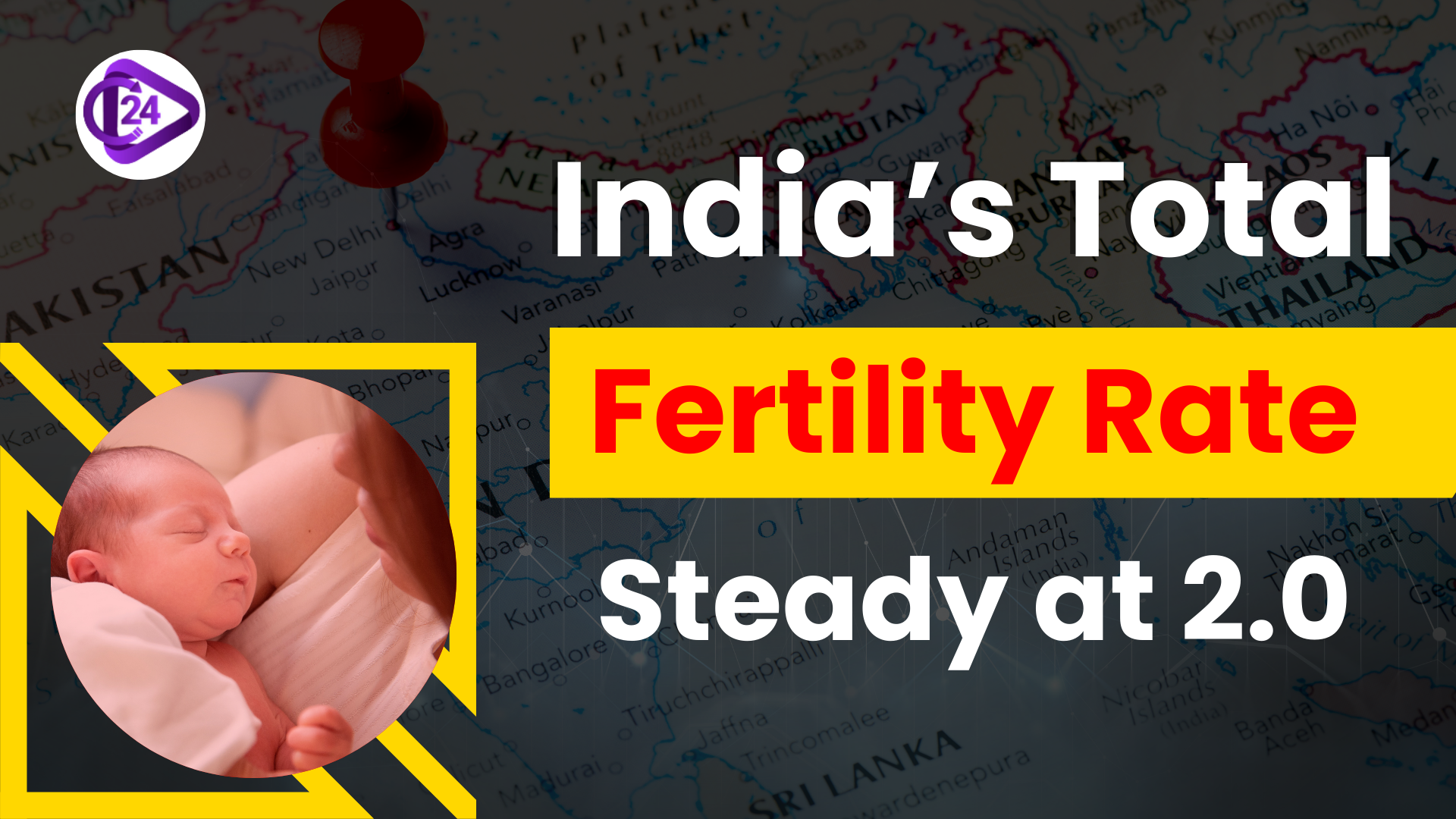
Based on the Sample Registration System (SRS) Report 2021, which was released by the Registrar General of India (RGI), India’s Total Fertility Rate (TFR) stands at 2.0, below the required replacement level of 2.1. This is the start of an era when India’s population increase is expected to decrease. However, Bihar’s fertility continues to be high; Delhi, on one hand, however, and West Bengal, on the other hand, have slipped past sustainable limits. The document highlights an increased aged population and reduced youth population representation. The population trends in the present allow one to draw significant conclusions regarding the need to develop adaptive strategies to prepare for the future economic and demographic tensions.
Context:
-
According to the SRS 2021 Report, India’s TFR is at 2.0, whereas Bihar has the highest (3.0), and Delhi/West Bengal the least (1.4), which should raise alarms for both ageing and the adequacy of future
Key Highlights of the Report:
-
Fertility Trends:
-
National TFR: Stable at 2.0 in 2021 (same as 2020).
-
Replacement level TFR: Most states have the replacement level; the overall replacement fertility rate of the country is 2.1.
-
Lowest TFRs: In Delhi and West Bengal, a crude rate is 1.4, whereas Tamil Nadu, Andhra Pradesh, Jammu and Kashmir, Kerala, and Maharashtra have a TFR of 1.5.
-
Highest TFR: Bihar - 3.0.
-
-
Demographic Shifts:
-
The rate of population between the age bracket of 0 – 14 years declined from 41.2% in 1971 to 24.8% in 2021.
-
The economically active group (15–59 years) rose from 53.4% to 66.2% of the population.
-
The proportion of age 60 and above population rose from 6% to 9% in 1990 and 2021 respectively. 65+ now 5.9% of the population.
-
-
Elderly Population:
-
Kerala is a clear winner when it comes to old age population, with 14.4% of its population being over 60 years, Tamil Nadu and himachal pradesh close the ranks at 12.9% and 12.3% respectively.
-
Lowest elderly population: Bihar (6.9%), Assam (7%), Delhi (7.1%).
-
-
Marriage Trends:
-
Meaningful female marriage happens with a delay of time of 22.5 years (2021) from 19.3 years in 1990.
-
TFR and the stability level of growth in a population.
-
TFR Definition: Total number of children a woman will bear in her lifetime.
-
Replacement Level: A TFR of 2.1 is required for the population to remain at its current level, increasing or decreasing.
-
Consequences of Low Fertility Rates:
-
Aging Population:
-
India has 149 million elderly (60+ years); projected to reach 347 million (20.8%) by 2050.
-
Evolution from a demographic advantage to a demographic issue.
-
-
Economic Impact:
-
Higher old-age dependency ratio.
-
Increasing pressures on resources as a result of higher health, pension and welfare needs.
-
Possible middle-income trap because economic burden is increasing with no commensurate productivity gains.
-
-
Labor Market Strain:
-
Reduced workforce participation.
-
Demographic changes cause pressure on productivity and innovative growth.
-
Global ways to counteract low birth rates
-
Germany: Flexible working, increased parental leaves and family support.
-
Denmark: State-funded IVF for women under 40.
-
Russia & Poland: The introduction of grants for the parents of many children to increase the fertility rates.
Way Forward:
-
Policy Adjustments:
-
Translate the flexible labour rules and strong support systems for parents adopted by states like Germany and Denmark.
-
Provide education subsidies, tax benefits, and an affordable kind of baby care.
-
-
Health and Nutrition Focus:
-
Foster programs such as Saksham Anganwadi and Poshan 2.0.
-
Supplement activities such as the Telangana pregnancy kit for promoting maternal support.
-
-
Support for Reproductive Health:
-
Making IVF, surrogacy, and fertility treatments affordable for all helps facilitate access to them.
-
-
Demographic Planning:
-
Establish a departmental expertise in the form of a High-Powered Committee to address the demographic transition stated in the Interim Budget 2024.
-
Accelerate the ongoing activities of the Census to provide accurate data for strategic planning.
-
Conclusion:
Persistent sub-replacement fertility levels in India indicate a great demographical turn, though the opportunities created and challenges introduced are still uncertain. Stagflation in population growth alleviates pressure on resources, but the nation is in a position to face such enduring issues as increasing aging and a shrinking workforce. Installed successfully, widespread, and ‘future-oriented’ policies are needed to ensure that India does not stall its pace of development and does not waste its demographic potential.










